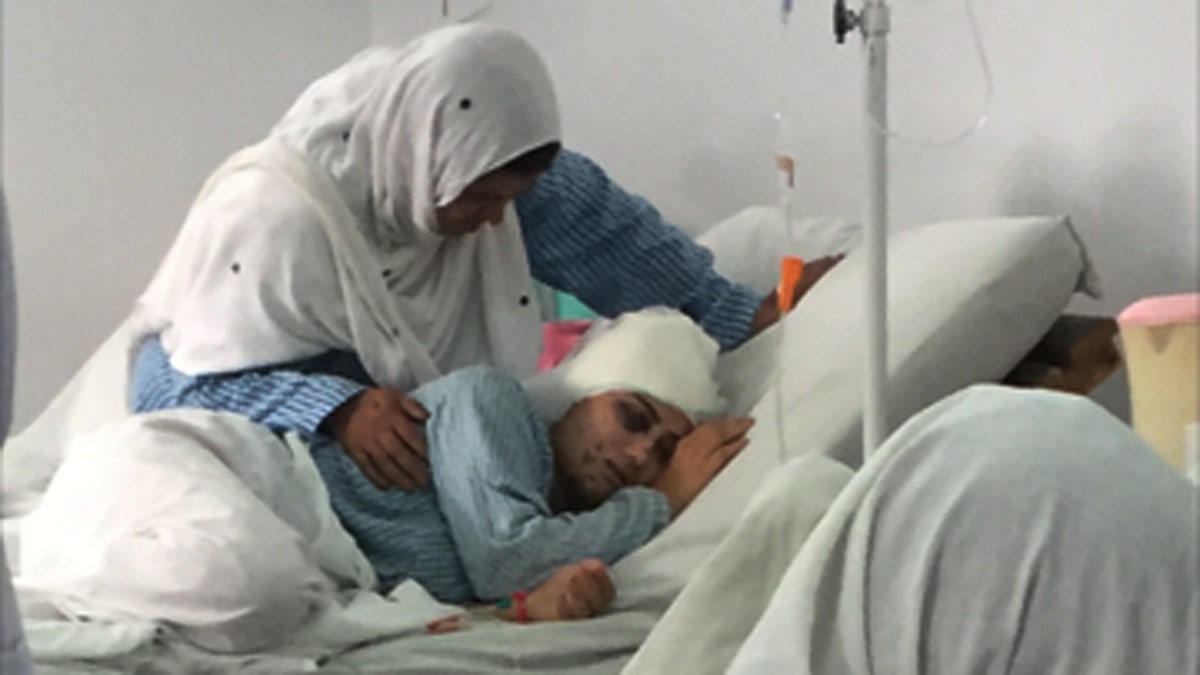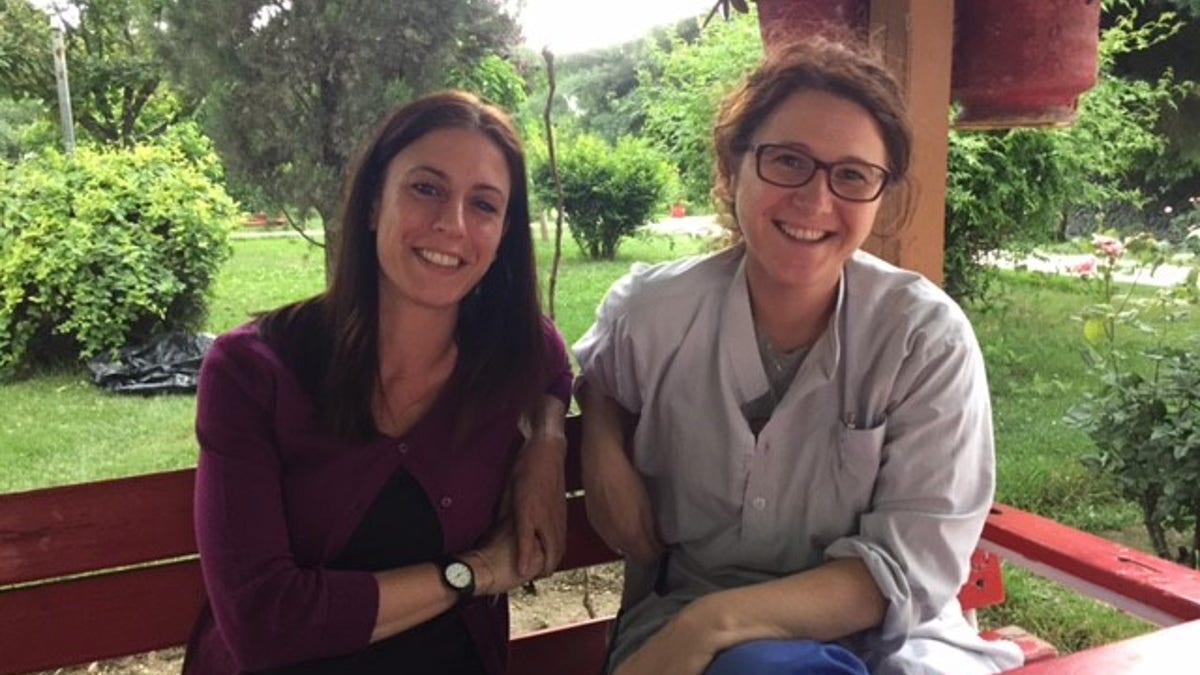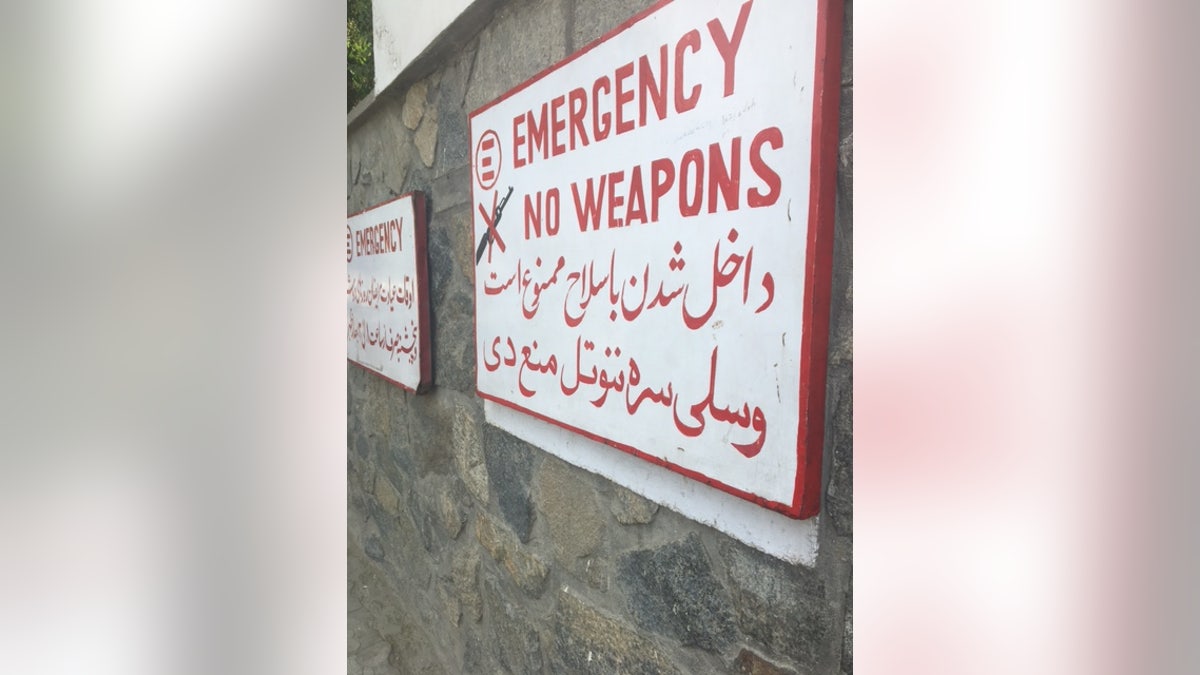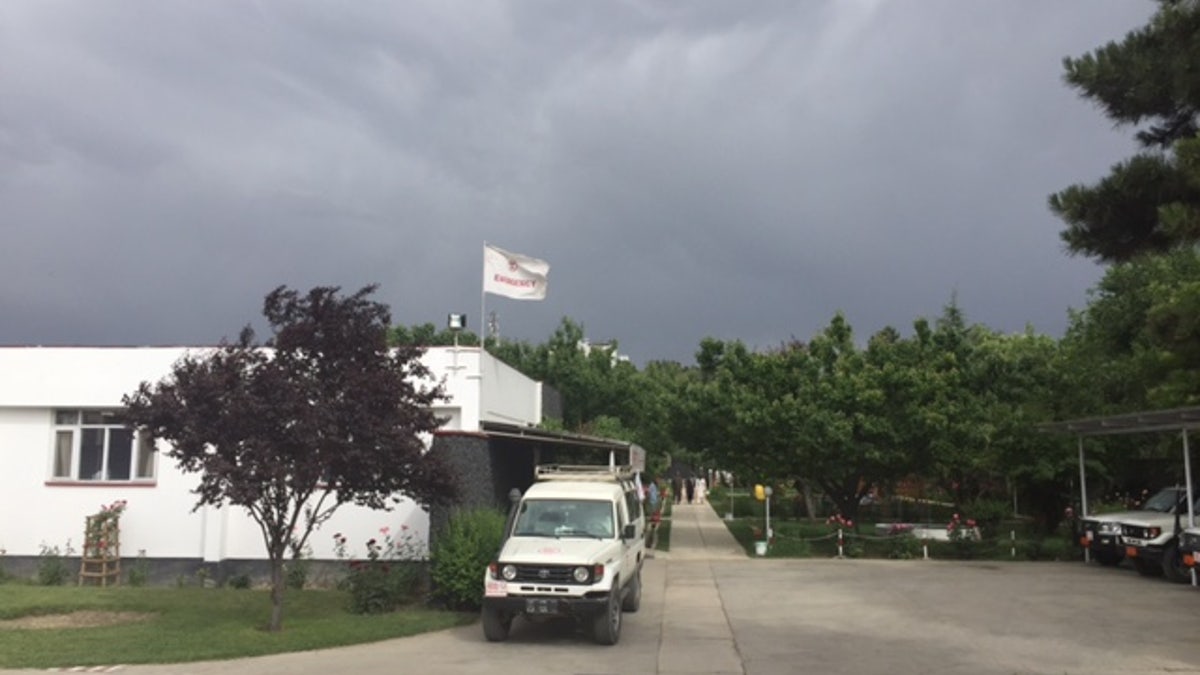KABUL, Afghanistan – Hospitals have become the focal point of life in Afghanistan, and perhaps none more than the Surgical Center for War Victims, which has long been poised in the heart of the nation’s deteriorating capital.
Operated by EMERGENCY, the Italian non-governmental organization (NGO), it runs on a policy of neutrality. The staff don't ask questions when patients are rushed through the gate; they just get on with saving lives.
"We don't discriminate. We don't ask if they are Afghan Army or Taliban or ISIS or civilians," Cristina Contini, the hospital's country administrator, tells Fox News. "But most end up being civilians – and children. Too many children."
Currently, one-third of the 400 patients who pass through the starkly red and white cluster of buildings each month -- filling up some 109 beds in the facility -- are minors. This includes babies whose lives have been laid to waste by bullets, shells, mortars, land mines and even knives.
One child, not even 4 years old, lies languishing in the intensive care unit -- a close-range bullet lodged in his head from the fighting. Another, Abdullah, wakes up without his arm and much of his ability to physiologically function. His father wraps his son's tiny broken body in towels to preserve his dignity as the days grow darker, helping hospital staff to clean if only to pass the time and not knowing what will come next.

A young woman fights for survival after being shot in an attempted car theft in Kabul, Afghanistan (Hollie McKay/Fox News)
Then there is 10-year-old Bakhtullah who bore the brunt of a shell that ripped open his torso. He weeps through the day and night as his brother -- with a face far too lined in grief for a child -- watches over him in silence, occasionally clipping his nails or combing his hair.
And while many are victims of the country's seemingly intractable war between government forces and an array of Islamic terrorist outfits, many are merely caught in the crossfire of random attacks born out of senseless criminal activity gripping the nation.
"There is another kind of war here, the violence of this city. This is a country that has an enormous number of thieves, drug addicts and high unemployment that leads to kidnappings and other attacks," notes Giorgia Novello, a nurse and the hospital’s medical coordinator. "Every year it is worse and worse. Disputes because this land is mine or this goat is mine – and the value of a human life loses its worth."

Cristina Contini, the country administrator and Giorgia Novello, the medical coordinator for EMERGENCY's hospital in Kabul, Afghanistan (Hollie McKay/Fox News)
Inside another ward, a young woman – barely 20 years old – writhes in agony and moans. Days ago, her body was battered with bullets from an AK-47 in the backseat of her family's car after a thief arbitrarily decided to steal it. She is the only one in the vehicle to have survived. Another elderly woman, all alone, pleads with glazed eyes to no one in particular. Her skin was scorched and her nerves destroyed by a shell, all while innocently praying in a mosque.
The other women and girls inside the ward were seared by missiles and rockets cracking through their windows while they slept or were left for dead en route to school because a bomb exploded near them. Some scream, some sob, some simply lie in their beds, silent.
Medical conditions are often made worse by the fact that many of the injured travel for days from remote parts of the country, given that there is limited access to quality care. This, along with poor living conditions, often renders them prone to severe infection. Novello points to one case in which it took 30 hours for a child who was shot in the chest to reach them.
"There is an infection behind every corner," she continues bluntly.
The uptick in homemade bombs filled with a wide assortment of objects also has become an increased cause for concern. Medical staff are now finding not only the expected shrapnel and nails embedded in the flesh of their patients, but miscellaneous objects like bones belonging to other people, making them all the more difficult to treat effectively.

Outside the Emergency Center for War Victims in Kabul, Afghanistan (Hollie McKay/Fox News)
"Our job is to make them survive," Contini continues. "But sometimes that is worse than dying. Every day, it is heartbreak."
Yet the generosity of the international community in recent years has alleviated at least a little of that pain, with donations paving the way for expanded and improved medical facilities. The hospital opened in early 2001 when the city was still under Taliban control -- a deserted, bombed-out nursery school was transformed into a center for survival.
But the Surgical Center for War Victims is now comprised of everything from an emergency room and three operating theaters where an average of 20 surgical procedures are performed daily, to an intensive care unit, sub-intensive care unit and a physiotherapy section to assist those learning to walk again. It employs just more than 300 staff, including six surgeons. The center even endeavors to give jobs to some of the patients who survive.
Three of the facility's permanent tailors are amputees and the soft-spoken man whose occupation it is to clean the corridors has found a way to do so despite having lost both his hands.
The biggest challenge EMERGENCY faces is in dealing with Afghan customs. While they use local suppliers for medical needs where possible, the surgical materials are imported from Europe for quality purposes -- and will almost always be left for months at the nearby airport awaiting clearance.
"It is frustrating," Novello acknowledges. "But we won't bribe."
AFGHAN GOVERNMENT WELCOMES KABUL'S 'BUTCHER'
US ROCKER USES MUSIC TO BRING HEALING, HOPE TO AFGHAN CHILDREN
Perhaps the saddest section – yet pertinent to any country in conflict – is the designated open area in the far back of the facility, which is designed to quickly be filled with the wounded for the occasions when a mass attack such as suicide bombing strikes and there simply aren't enough beds elsewhere. The code word is "old falcon" and that signals medical staff to quickly fill the space with cots and mattresses and bed sheets and fluids.

Premature baby girl fights for survival in EMERGENCY's hospital in Panjshir Valley, Afghanistan (Hollie McKay/Fox News)
"We have a triage system when this happens," Novello explains, “where we have to determine who must be treated first, and who can wait."
Meanwhile, some 80 miles north in the secluded province of Panjshir Valley, sits another EMERGENCY hospital in the form of converted war barracks from the Soviet invasion. There, the staff contend with a war of yet another kind -- helping mothers and babies in a country plagued by the highest infant mortality rate in the world; The CIA’s World Factbook, stands at 112 per 1,000 live births.
When it first opened in 1999, the hospital primarily focused on tending to the war wounded, but the hospital was soon transformed into a pediatric and maternity hub. Expectant mothers commute from far and wide -- sometimes on donkeys from the mountain tops -- to give their young a better chance at survival.
Starting in 2015, the center underwent construction to meet the growing demand. It now holds 160 beds with four delivery rooms, two operating theaters, a neonatal intensive care ward and intensive care ward for those suffering complications.
"We want to reduce the injustice of being far from a hospital," said the facility’s medical coordinator, Gabriella Rivera.
And for all the hardships currently afflicting the conflict-punctured country, it's a gentle place teeming with life and the welcome sounds of newborn cries. The hospital delivers an average of 700 babies per month and patients, distinguished by their white pajamas and red headscarves, sit together in their cots cradling their young.

EMERGENCY Maternity Hospital in Panjshir Valley, Afghanistan (Hollie McKay/Fox News)
EMERGENCY has also implemented a prenatal care program from women in these remote areas, which includes periodical monitoring and training local midwives.
But perhaps its greatest life-saving addition has been the development of a special section for babies born prematurely. The hospital has 10 incubators, all of which are occupied by the tiniest of the tiny, every little breath supported by medical advancements that just a few years ago would have been unheard of by those in the quaint village.
The maternity center also is a space that, slowly but surely, is challenging the archaic gender norms that have encumbered medical care for Afghan women. The doctors are almost all male.
"At first, many of the husbands and wives had problems with this. They feared having a male doctor do the delivery," Rivera adds. "But it is less so now. It is about exposing them to something new, and we find most are willing to accept the change.”
